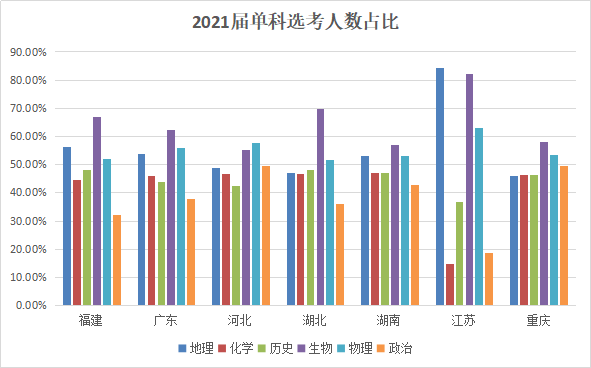导读:英语中的冠词是最常见的一种限定词,它属于虚词,不能单独使用或充当任何句子成分,只能用在名词前面,说明所指的人或物。不定冠词有a和an,定冠词有the。但它使用率最高,规则又多,种类用法也不少,而且是历年各地中考必考语言点之一。在此,长沙新东方整理分享了2019中考英语语法重点总结:冠词用法详解,以供学习与参考,希望对大家有所帮助。
1. 不定冠词的用法
冠词本身不能单独使用,也没有词义,它用在名词的前面,帮助指明名词的含义。英语中的冠词有三种,一种是定冠词,另一种是不定冠词,还有一种是零冠词。
不定冠词a (an)与数词one 同源,是“一个”的意思。a用于辅音音素前,一般读作[e],而an则用于元音音素前,一般读做[en]。
1)表示“一个”,意为one;指某人或某物。例如:
A Mr. Ling is waiting for you. 有位姓凌的先生在等你。
2)代表一类人或物。例如:
A knife is a tool for cutting with. 刀是切割的工具。
Mr. Smith is an engineer. 史密斯先生是工程师。
3)组成词组或成语,如a little / a few / a lot / a type of / a pile / a GREat many /
many a / as a rule / in a hurry / in a minute / in a word / in a short while /
after a while / have a cold / have a try /keep an eye on / all of a sudden等。
2. 定冠词的用法
定冠词the与指示代词this,that同源,有“那(这)个”的意思,但意义较弱,可以和一个名词连用,来表示某个或某些特定的人或东西。
1)特指双方都明白的人或物。例如:
Take the medicine. 把药吃了。
2)上文提到过的人或事。例如:
He bought a house. I’ve been to the house. 他买了幢房子。我去过那幢房子。
3)指世上独一无二的事物,如the sun, the sky, the moon, the earth等。
4)与单数名词连用表示一类事物,如the dollar 美元; the fox 狐狸;或与形容词或分词连用,表示一类人:the rich 富人;
the living 生者。
5)用在序数词和形容词最高级及形容词only,very,same等前面。例如:
Where do you live? I live on the second floor. 你住在哪?我住在二层。
That’s the very thing I’ve been looking for. 那正是我要找的东西。
6)与复数名词连用,指整个群体。例如:
They are the teachers of this school. (指全体教师)
They are teachers of this school. (指部分教师)
7)表示所有,相当于物主代词,用在表示身体部位的名词前。例如:
She caught me by the arm. 她抓住了我的手臂。
8)用在某些由普通名词构成的国家名称、机关团体、阶级、等专有名词前。例如:
the People’s Republic of China 中华人民共和国
the United States 美国
9)用在表示乐器的名词之前。
例如:She plays the piano. 她会弹钢琴。
10)用在姓氏的复数名词之前,表示一家人。例如:
the GREens 格林一家人 (或格林夫妇)
11)用在惯用语中。例如:
in the day, in the morning (afternoon,evening), the day after tomorrow
the day before yesterday, the next morning, in the sky (water,field,country) in
the dark, in the rain, in the distance, in the middle (of), in the end,on the
whole, by the way, go to the theatre
3. 零冠词的用法
1)国名,人名前通常不用定冠词:England,Mary。
2)泛指的复数名词,表示一类人或事物时,可不用定冠词。例如:
They are teachers. 他们是教师。
3)抽象名词表示一般概念时,通常不加冠词。例如:
Failure is the mother of success. 失败乃成功之母。
4)物质名词表示一般概念时,通常不加冠词,当表示特定的意思时,需要加定冠词。例如:
Man cannot live without water. 离开水人就无法生存。
5)在季节、月份、节日、 假日、日期、星期等表示时间的名词之前,不加冠词。例如:
We go to school from Monday to Friday. 我们从星期一到星期五都上课。
6)在称呼或表示官衔,职位的名词前不加冠词。例如:
The guards took the American to General Lee. 士兵们把这个美国人送到李将军那里。
7)在三餐、球类运动和娱乐运动的名称前,不加冠词,如have breakfast,play chess。
8)当两个或两个以上的名词并用时,常省去冠词。例如:
I can’t write without pen or pencil. 没有钢笔和铅笔,我就写不了字。
9)当by 与火车等交通工具连用,表示一种方式时,中间无冠词,如by bus,by train。
10)有些个体名词不用冠词,如school,college,prison,market,hospital,bed,table,class,town,church,court
等个体名词,直接置于介词后,表示该名词的深层含义。例如:
go to hospital 去医院看病
go to the hospital 去医院 (并不是去看病,而是有其他目的)
11)不用冠词的序数词;
a. 序数词前有物主代词时。
b. 序数词作副词。例如:He came first in the race. 他跑步得了第一。
c. 在固定词组中,如at(the)first, first of all, from first to last等。
4. 冠词与形容词+名词结构
1)两个形容词都有冠词,表示两个不同的人或物。例如:
He raises a black and a white cat. 他养了一只黑猫和一只白猫。
The black and the white cats are hers. 这黑猫和白猫都是她的。
2)如后一个形容词无冠词,则指一人或一物。例如:
He raises a black and white cat. 他养了一只花猫。
5. 冠词位置
1)不定冠词位置
不定冠词常位于名词或名词修饰语前。注意:
a. 位于such,what,many,half等形容词之后。例如:
I have never seen such an animal. 我从来没见过这样的动物。
Many a man is fit for the job. 许多人适合这岗位。
b. 当名词前的形容词被副词as, so, too, how, however, enough修饰时,不定冠词应放在形容词之后。例如:
It is as pleasant a day as I have ever spent. 我从未这么高兴过。
so short a time 如此短的时间
too long a distance 距离太远了
c. quite,rather与单数名词连用,冠词放在其后。但当rather,quite 前仍有形容词时,不定冠词放其前后均可,如:rather
a cold day/a rather cold day。
d. 在as,though 引导的让步状语从句中,当表语为形容词修饰的名词时,不定冠词放形容词后。例如:
Brave a man though he is,he trembles at the sight of snakes.
他尽管勇敢,可见到蛇还是发抖。
2)定冠词位置
定冠词通常位于名词或名词修饰语前,但放在all, both,double,half,twice,three
times等词之后,名词之前。例如:
All the students in the class went out. 班里的所有学生都出去了。





















 京公网安备11010802021790号
京公网安备11010802021790号









 学习资料
学习资料
